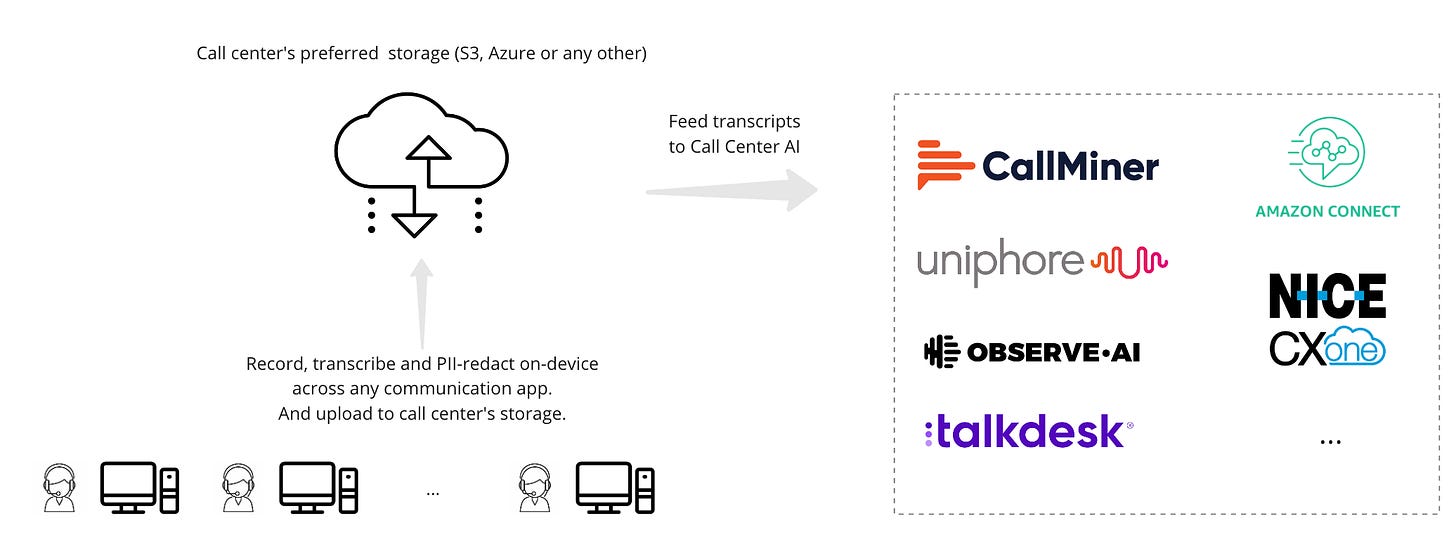Introduction
With advancements in Speech-to-text AI and on-device AI, the call center industry is approaching a transformative change. We should start rethinking the traditional approach of cloud-based transcriptions, bringing the process directly onto the agents’ devices.

Let’s dive into why this makes sense for modern call centers and BPOs.
- Cost Benefits: The most immediate benefit of on-device transcription is cost savings. Traditional cloud transcription services are very expensive due to the costs associated with audio data transmission and processing on remote servers. On-device transcription, however, leverages the processing power of the agent’s device, leading to a significant reduction in these costs.
- Security Enhancement: Security is a top concern in the call center world, especially when dealing with sensitive customer data. With on-device transcription, the audio is not sent to 3rd party services, drastically reducing the risk of data breaches. On-device processing aligns perfectly with stringent data protection regulations, offering peace of mind to both call centers and their customers.
- On-Device PII Redaction: This method also allows for direct PII (Personally Identifiable Information) redaction on the agent’s device. This enables call centers to use the data appropriately while adhering to customer privacy and industry regulations.
- Live Transcription: Another exciting aspect of on-device transcription is its application in providing low-latency live transcription for agents. This feature can be a game-changer, enabling agents to see a real-time transcript of the call. When integrated with existing agent-assist systems, agents can instantly receive suggestions and accurate responses, enhancing both efficiency and customer satisfaction.
- Support for all SoftPhones: Since the transcriptions and recordings are performed on the agent’s device, it can support any SoftPhone, Dialer, or CCaaS solution the call center chooses to work with, making it application-agnostic.
- Unified Experience and Storage: Many call centers (such as BPOs) must support multiple SoftPhones for their customers. With on-device transcriptions, all transcription and recording data can be saved in a unified storage giving the call center further opportunity to streamline agent experience across different communication applications and as well as easy integration with other systems.



